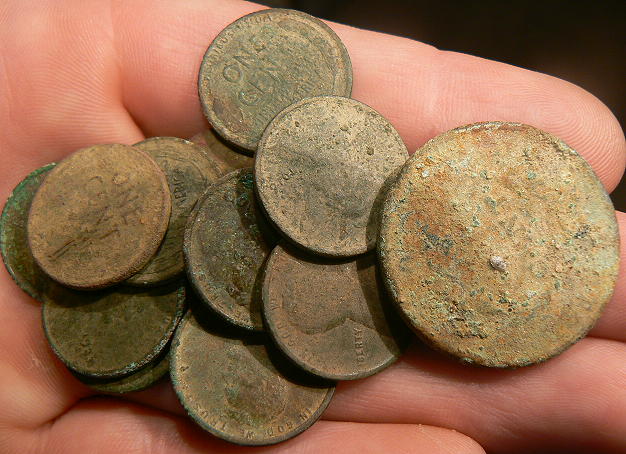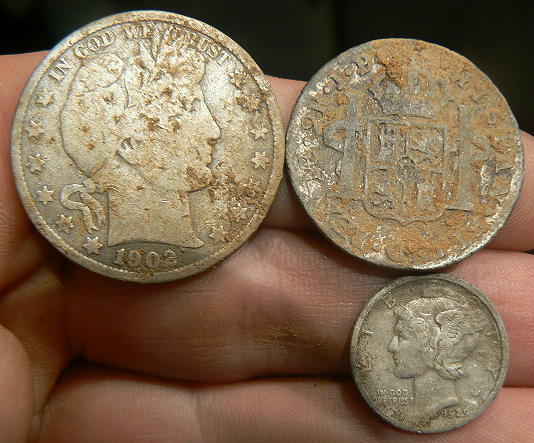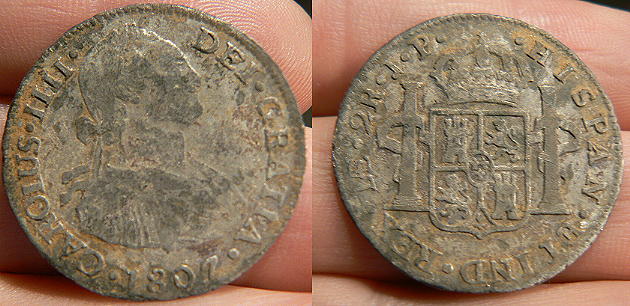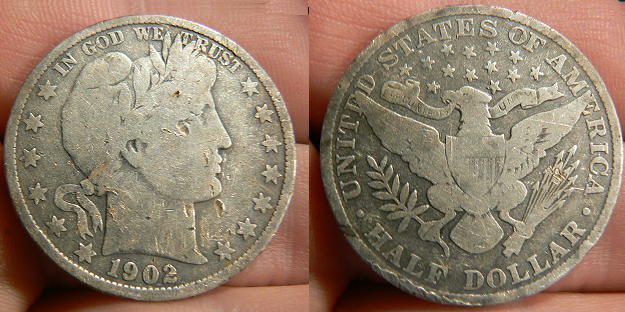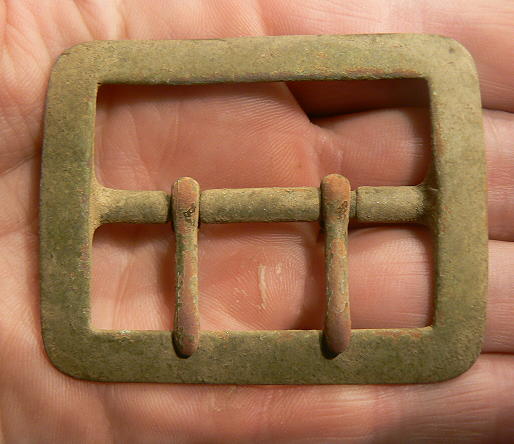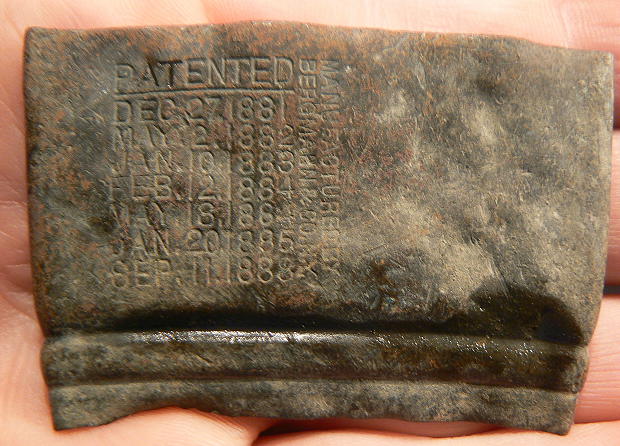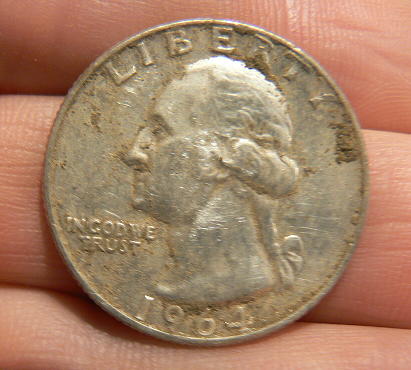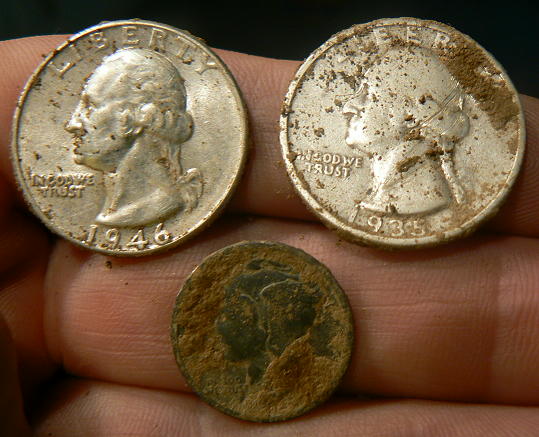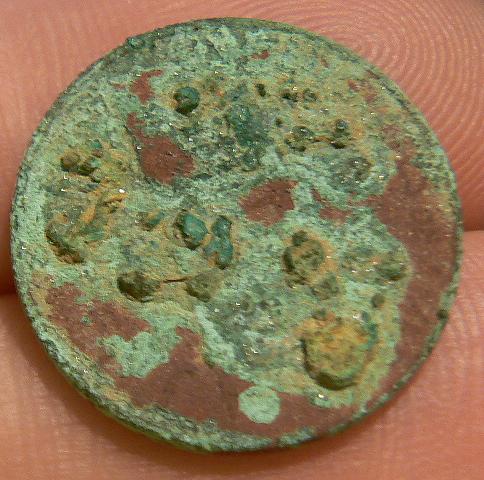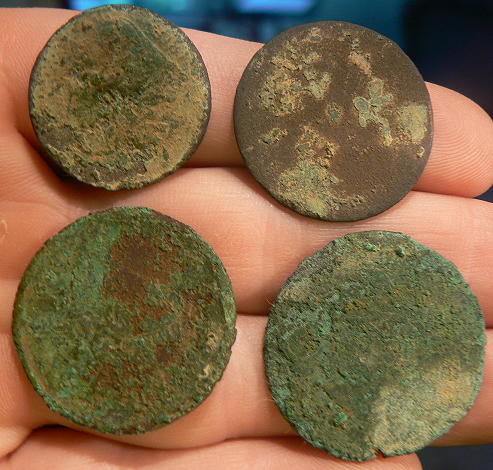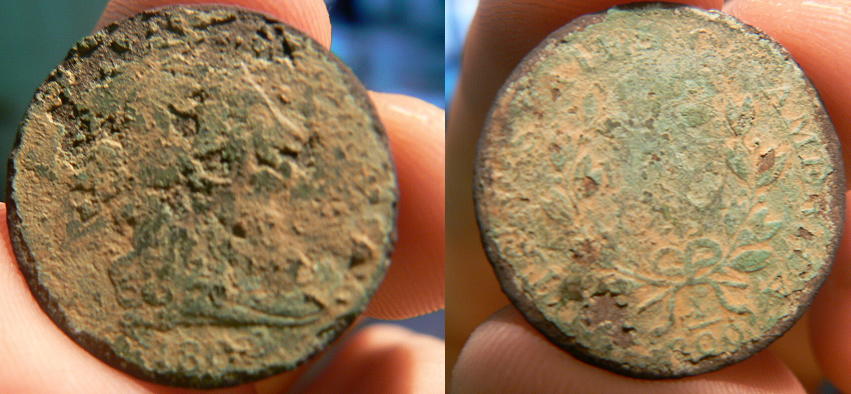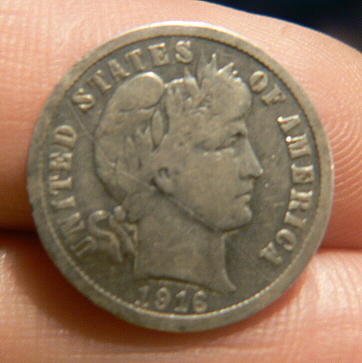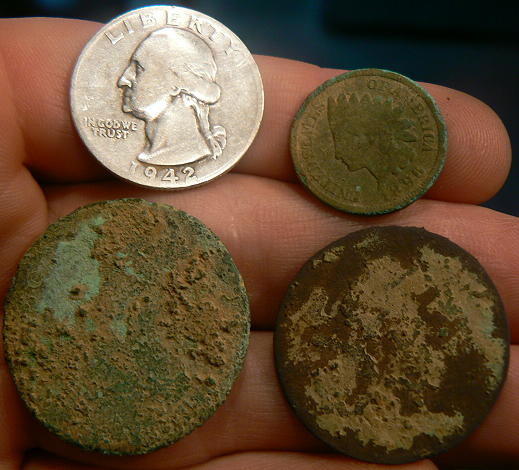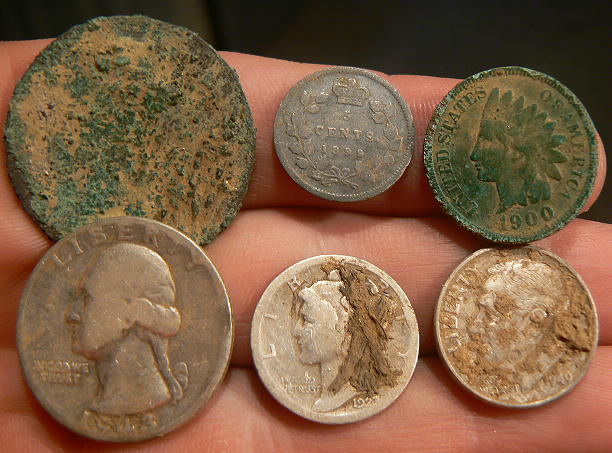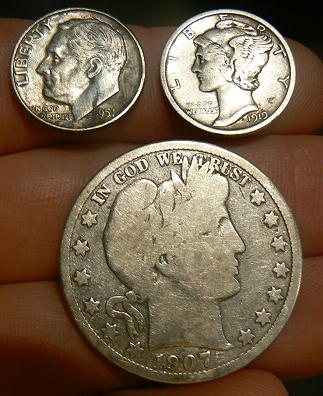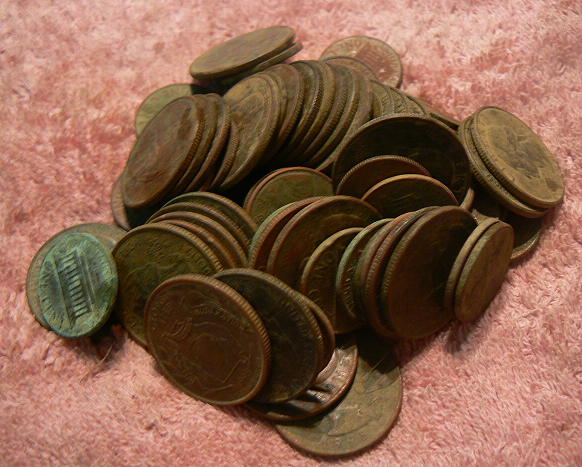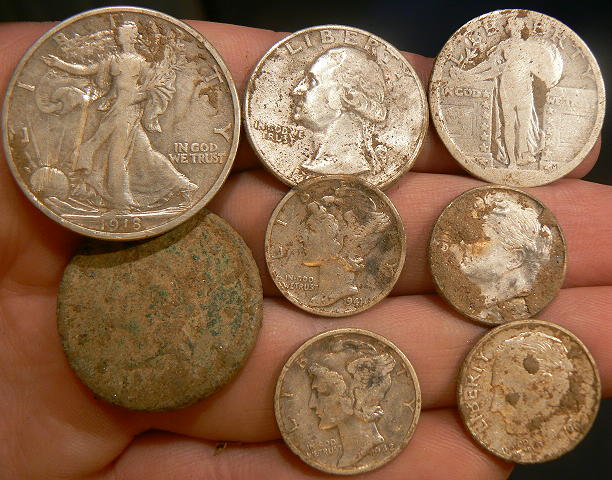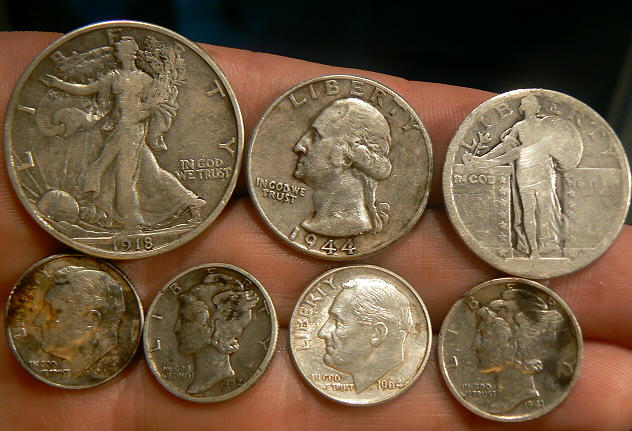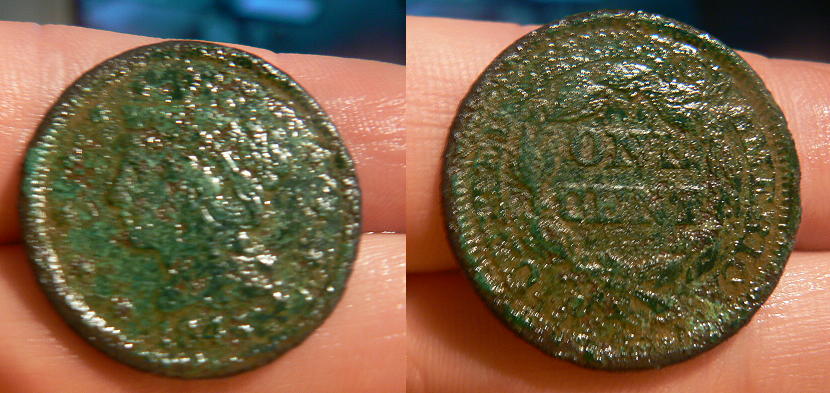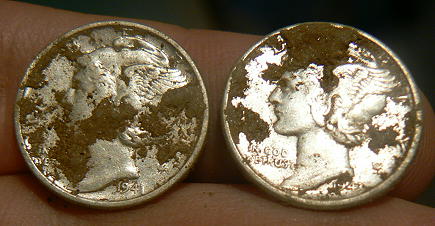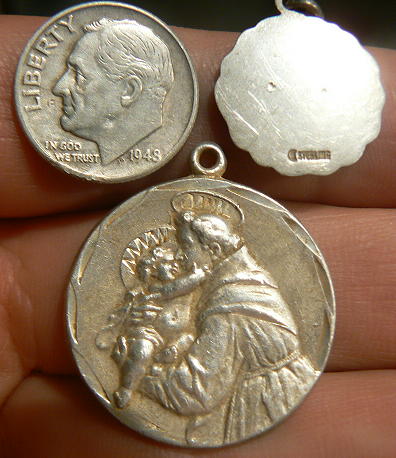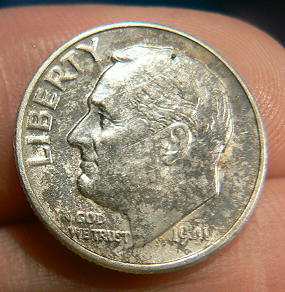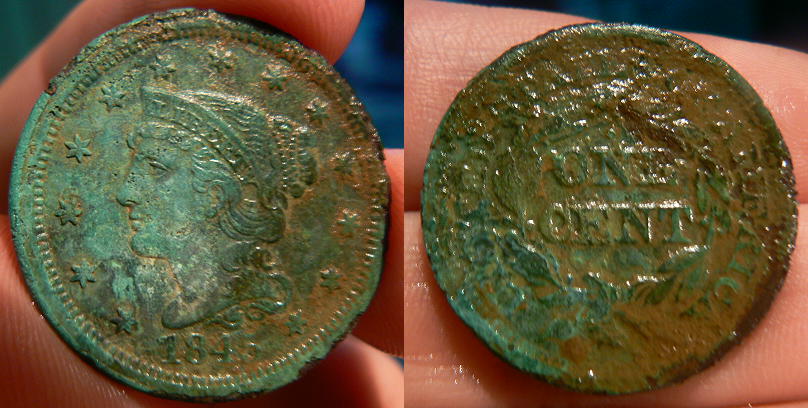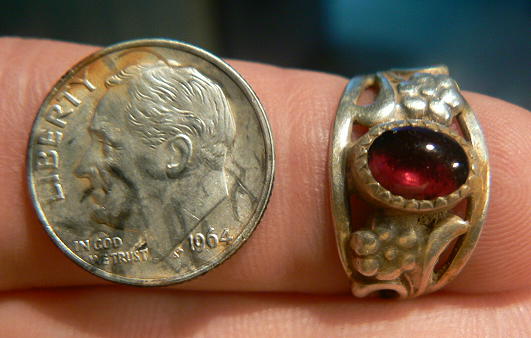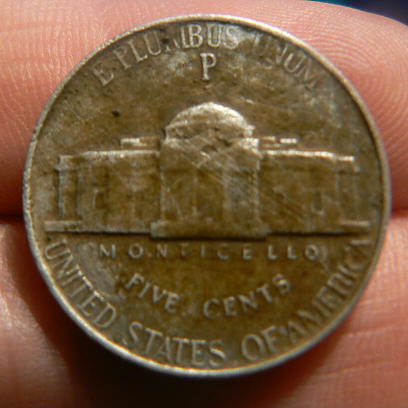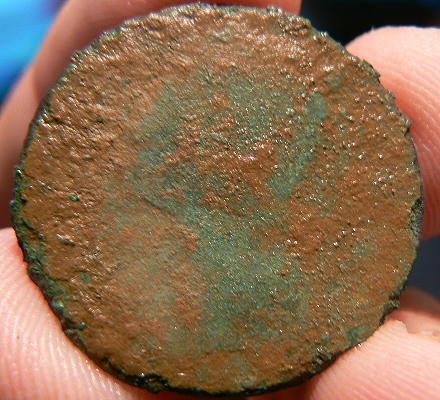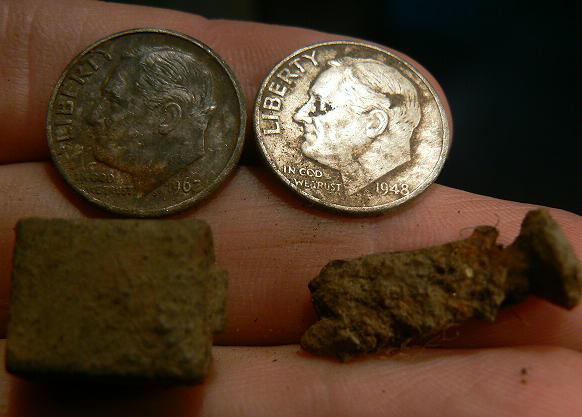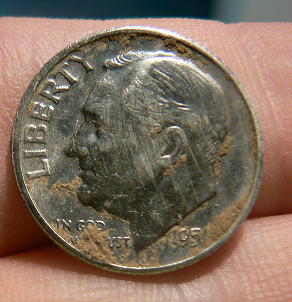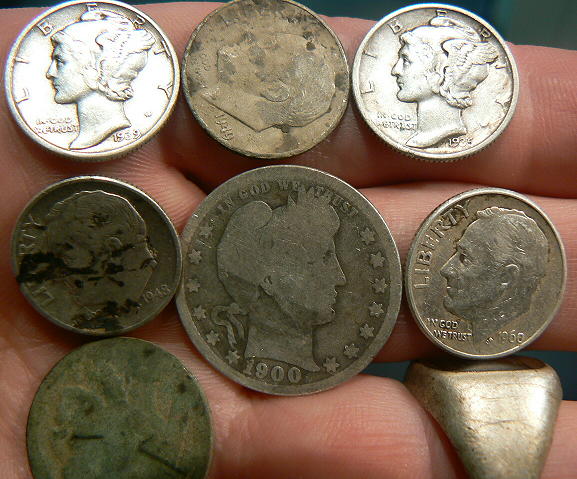Added some size to my unit today, taking it from 11 to 13 inches, with the Detech Ultimate 13 coil.
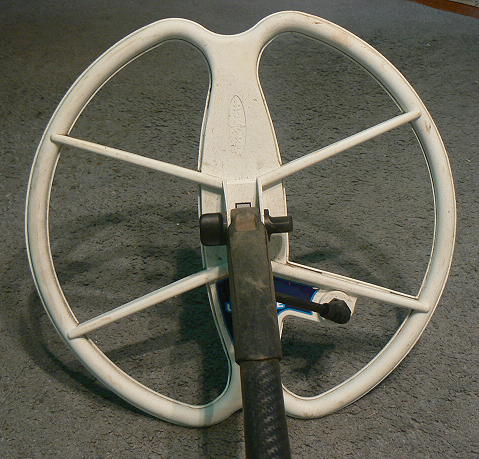
I’ve never bought an aftermarket coil before, and I was a bit worried, as the reviews are sparse and conflicted (translation: I spent alot of money on this coil; if I post a bad review, I look like a chump, and I ain’t wanting that, am I? (Never doubt the application of economics to everything)).
But, I bought the coil cause it was on sale (translation: the only US distributor (who I would otherwise not do business with, but Detech (the manufacturer) is in Bulgaria and ordering direct is hard) dropped their prices from gouge levels to reasonable levels), and cause word on the street was that it gave an inch more on silver dimes in hunted out parks. We all could use another inch, couldn’t we? I know I can; in particular, I’m anxious to try to see what is at inch lower at some of my massive honey holes of the past that I’ve carefully gridded out.
Unfortunately, I’m not going to provide a review today, as much as I’d like to, cause I can’t do so scientifically. The only way to do that is to compare targets using the Ultimate 13 vs the stock coil, or gridding out previously gridded and hunted out parks, neither of which I was willing or able to do today (let’s face it, changing coils is hard, I do work mornings and evenings, I spend time with my son, and was working a mild honey hole (which seems a better idea than hunted out parks), as those who have been reading the past entries are aware), so time is a bit tight to do science now). But, what I will do, is detail today’s experience, FWIW.
This time, I’ll get to the silver first, cause who wants to read more bullshit to get to it? Here it is, 3 mercs, 1 barber, and half a copper (are you kidding me?), over 4.5 hours.
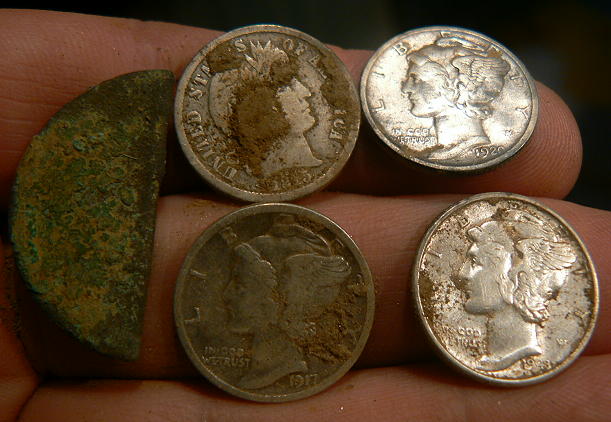
Now, onto the Detech Ultimate 13 experience. First, I started in a big open field, where I didn’t expect to find much, just to get a feel for the machine with the coil, the sounds, the pinpointing, and so forth. Its a low trash, low target field. My goal was to find one coin in this field — pinpoint, recover, and move on to more promising zones (I didn’t want to be a pinpointing moron with this new coil in the hotter, manicured lawn zone; pinpointing with large coils can be hard, and its nice to not be surprised).
My first observation was the the machine did not swing heavier, despite the 30% larger coil. That’s a win in my book. I found a memorial penny at 3 inches, and pinpointing was easy, another win in my book (those who actually read my blog know I think the E-Trac pinpointing is absolute garbage; the larger coil wasn’t harder to pinpoint with — in fact I think it was easier, tho there may be sample bias here, perhaps I was being more careful, who knows? Remember, I wasn’t doing science, but it was actually a joy to recover the target more or less under the center of the coil, unlike with the stock coil, where the pinpointing experience can more or less be described as — it beeps, the target is more or less in this universe, bring in a backhoe and hope for the best, and hope the groundskeeper is on vacation).
So, pinpointing was a big win. It actually worked, unlike the random experience with the stock coil. I decided to head over to the zone of the past few days which as produced the finds recently blogged, and, on the way, got that half of a copper. WTF? Where’s the other half? How do I score that? (cause we all know dectorists, and especially economists, are about counting and scoring things). I gridded around (losing precious time), and couldn’t find it. This is another win — I was already in normal detecting mindset with this coil.
Into the hot zone, which had grown cold on the last hunt with the stock coil on the past couple ranks of the grid, and I was moving farther away from where logic would expect old coins to be found. I didn’t expect much, and didn’t find much at first, but at least the coil worked. The experience seemed the same, and given the larger size of the coil, I could move thru the dead faster, hoping to find a hot zone. It added efficiency, with no apparent loss of performance (but, of course, there is no way to be sure, without going over the same zone with the stock coil (and I ain’t about to do that, I’m afraid)). This was a win in my book.
Eventually I found I silver. Woohoo! It was the ’43 merc. It was on its side, at 5 inches. Pinpointing was bitch, but it always is with coins on their side. This is a big win — one of the nice things about the E-Trac is its ability to find silvers on their side. Didn’t lose that with this coil. Interesting to note that the pinpoint projected out 7 inches from the coin on its side. That’s good (hard to pinpoint, but shows the range of the coil. Never saw that with the stock coil on a 5 inch deep silver on its side).
I pressed on without finding much except a couple of wheats, and nothing really deep. I did, however, find some affected clad. Clad in the trash. No one likes finding clad, but in this case, it demonstrated that this coil has good separation. Another win. The experience remained the same w.r.t to high conductive targets in low conductive trash. Now, did I miss some that the stock coil would have found? Who knows? That’s the problem with not doing things scientifically. Who knows? But the experience (and run rate of clad, even in trash, but not heavy trash), felt the same.
I did notice that the coil was noisier. With the stock coil, I just put it on man 30 and go at most sites, This coil was a bit too noisy to do that. That’s a loss in my book. I dropped to man 26, and it quieted down quite a bit (I was surprised by how much actually, cause this doesn’t have much effect with the stock coil). Shortly thereafter, I nailed 2 silvers, the ’17 merc, then the ’20 merc. On both targets, before digging (I knew they were silvers beforehand — those who love the E-Trac know what I’m talking about), I jacked to man 30 to test, and while I could still hear them fine (of course, I knew they were there), there was much more chatter, and one wonders whether I would have heard them above the chatter if I didn’t know they were there? Who knows? The point is I had to be more careful adjusting the sens as I moved about the site. That’s a loss in my book.
Both silvers were at about 6-7 inches, and rang clear.
Then I got lucky. I got a ferrous affected silver. That was the barber dime. See-thru with conductive trash had already been proven with clad; I had yet to prove see-thru still worked with ferrous trash. But it did. Whohoo. That’s a win in my book, pulling the barber out of a ferrous affected hole. (I rescanned the hole, and it nulled on the ferrous trash — I even spent a couple of seconds trying to recover the ferrous target to prove its existence, but could not find it, and I ain’t interested in wasting too much time digging ferrous junk, even in the name of blogging, so I let it go).
Summary: This coil is a keeper. While I could not prove a performance improvement over the stock coil, at least, (based on run rate of 4 silvers per 4.5 hours, in the least promising section of the zone where the better section had a 1 silver per hour run rate, and not accounting for the time lost testing the coil in the field), no performance appeared to be lost. If we can ever get a really deep one that the stock coil cannot see, it will be a win. Hopefully I’ll do that science someday, but at least it doesn’t seem like I’ll be losing anything while hoping to run into that really deep silver. The downside is that you have to keep adjusting sens to use this coil. Time will tell if that will be too much of a hassle for me. I will say, given how dead I expected this section to be, the fact that the coil was larger and allowed me to cover ground faster may have increased the run rate over what was possible with the stock coil.

